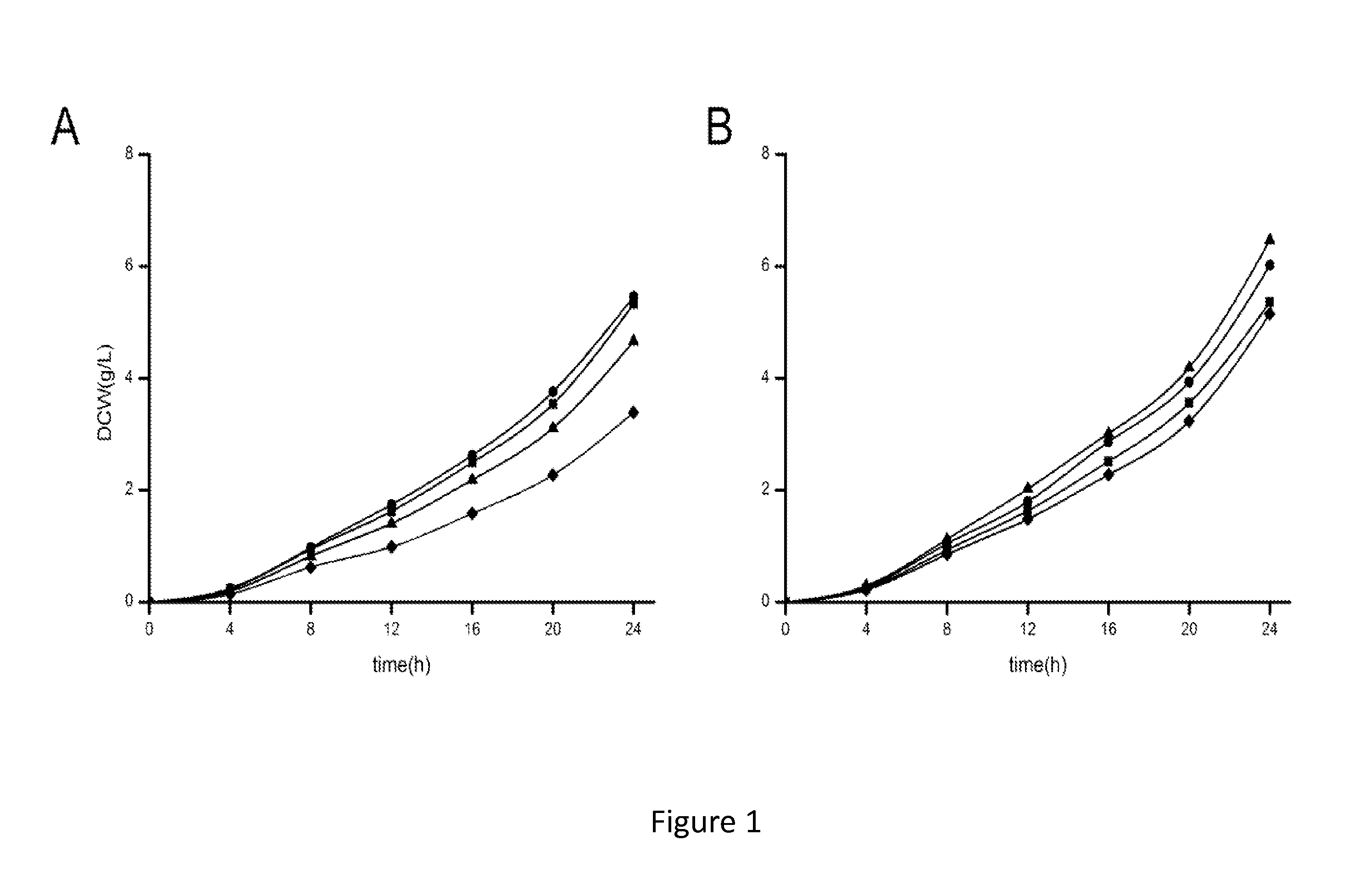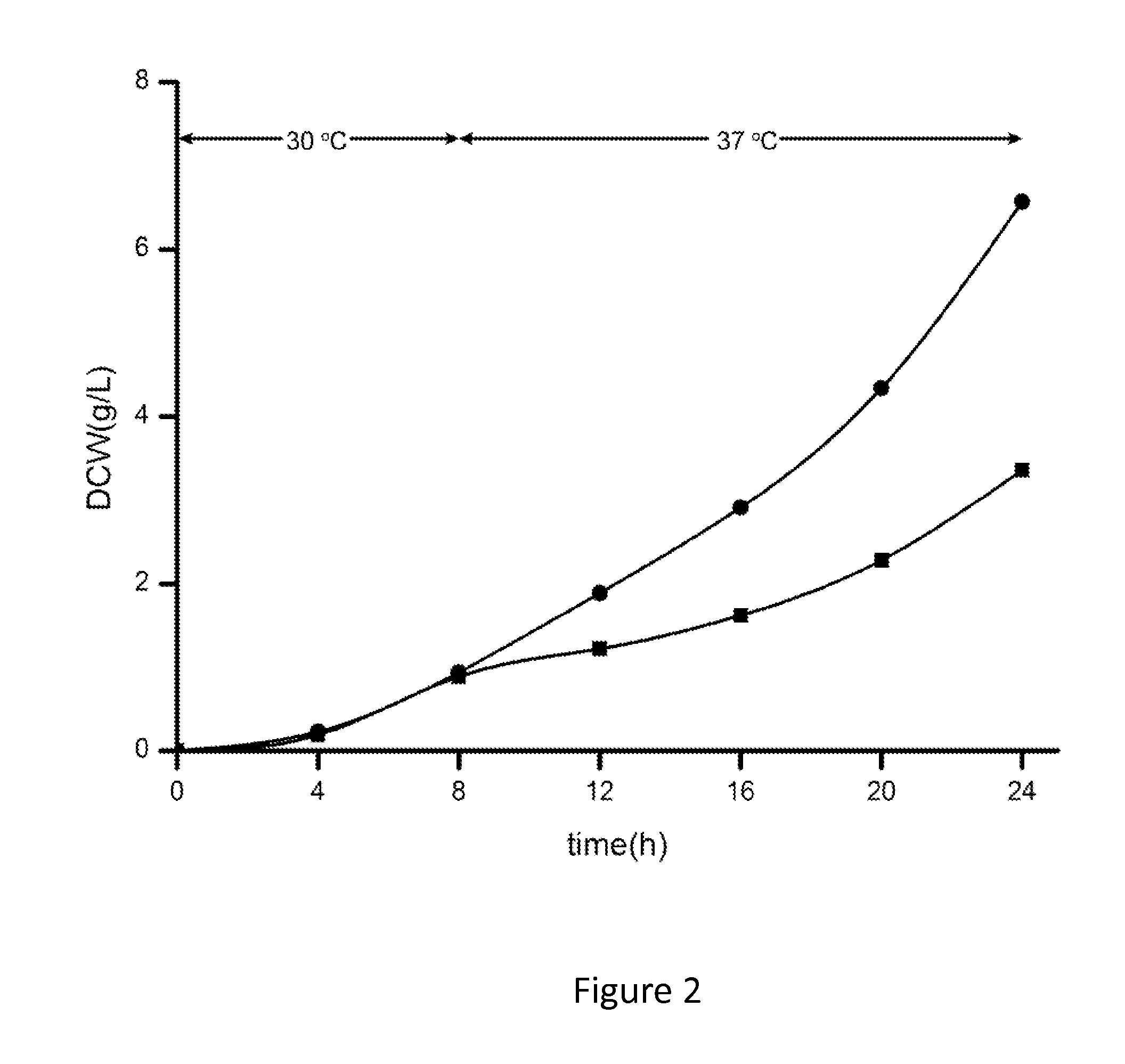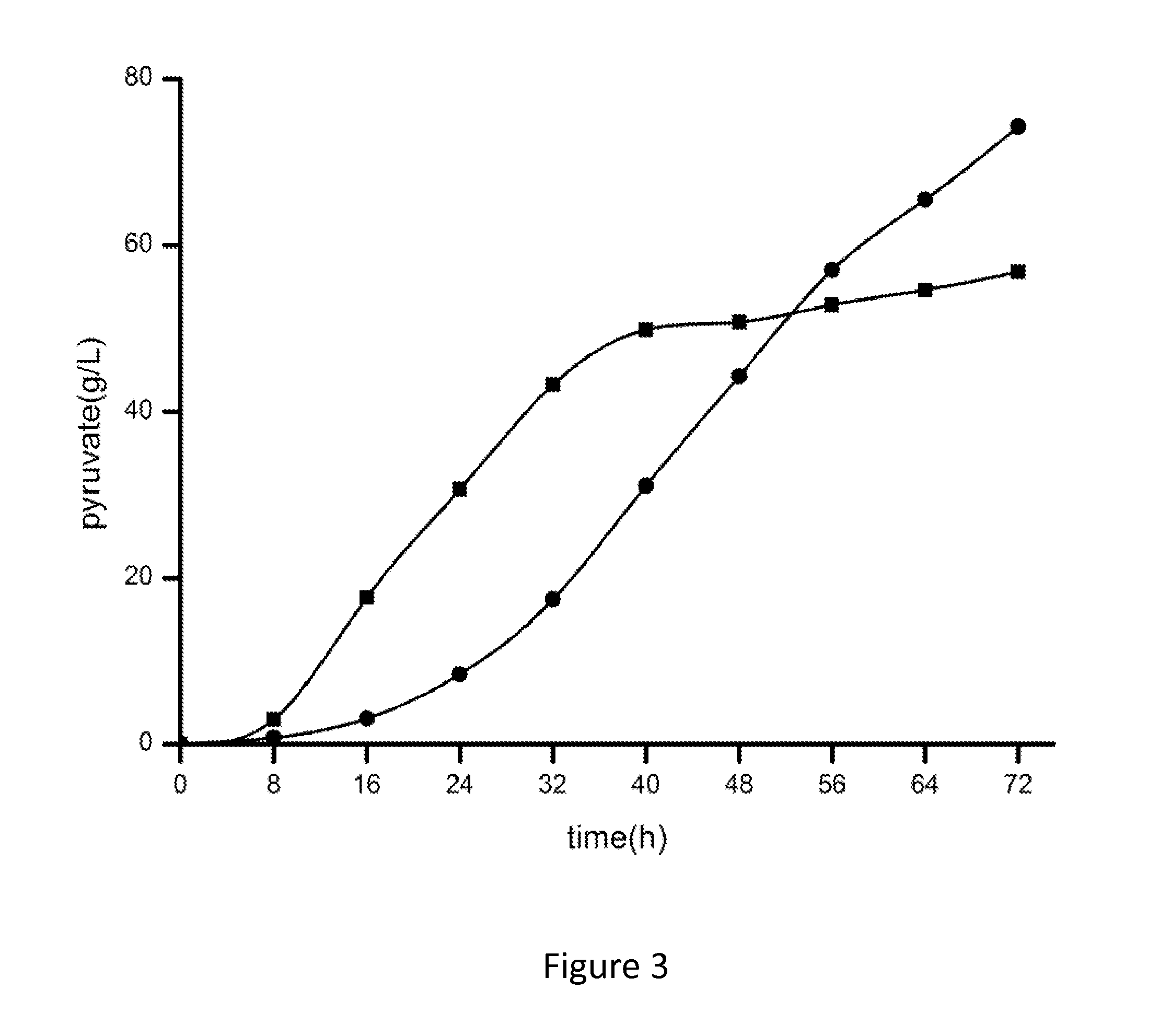Genetically Engineered Torulopsis glabrata with Enhanced Extracellular Secretion of Pyruvic Acid
a technology of pyruvic acid and torulopsis glabrata, which is applied in the field of metabolic engineering, can solve the problems of high raw material cost, low productivity, and complex bio-fermentation process
- Summary
- Abstract
- Description
- Claims
- Application Information
AI Technical Summary
Benefits of technology
Problems solved by technology
Method used
Image
Examples
example 1
Comparison of Cell Growth of Recombinant Strain T. glabrata Q1 and T. glabrata C Under Different Temperatures
[0028]Freshly grown single colonies of T. glabrata C and T. glabrata Q1 were transferred into 250 mL flasks containing 25 mL liquid YPD medium and cultured at different temperatures: 30° C., 33° C., 36° C. and 39° C., 200 rpm. Dry cell weight (DCW) was measured every 4 hours (FIG. 1).
[0029]As it was shown in FIG. 1 that when the strains were cultured at 30° C., there was no obvious difference between cell growth of T. glabrata C and T. glabrata Q1. When the strains were cultured at 36° C. and 39° C., cell growth of T. glabrata C was strongly inhibited and its maximum DCW dropped to 87.4% and 63.6% compared with that obtained at 30° C. When the strains were cultured at 33° C. and 36° C., cell growth of T. glabrata Q1 was promoted and its maximum DCW increased to 112.4% and 120.7% compared with that obtained at 30° C. However, cell growth of T. glabrata Q1 was also slightly inh...
example 2
Temperature-Induced Regulation of CutA Heterologous Expression
[0030]To verify the effects of CutA over-expression on temperature tolerance of T. glabrata, freshly grown single colonies of T. glabrata C and T. glabrata Q2 were transferred into 250 mL flask containing 25 mL liquid YPD medium and cultured at 30° C., 200 rpm for 8 hours. Afterwards, the culture temperature was increased to 37° C. to induce the expression of CutA for 16 hours in T. glabrata Q2. Dry cell weight (DCW) was measured every 4 hours (FIG. 2).
[0031]As shown in FIG. 2, when the strains were cultured at 30° C., there was no obvious difference between cell growth of T. glabrata C and T. glabrata Q2. However, when the strains were cultured at 37° C., the cell growth of T. glabrata C was strongly inhibited while the cell growth of T. glabrata Q2 was increased.
example 3
Effects of High Temperature on Pyruvate Synthesis by Recombinant Strains
[0032]Fresh T. glabrata Q1 cultures were transferred from solid slant to 500-mL flasks containing 50 mL liquid YPD medium and cultured at 30° C., 200 rpm for 24 hours. The cultured cells were inoculated into fermentation medium with an inoculum size of 10% (v / v), and cultured at 36° C., 200 rpm for 72 hours. T. glabrata C cells were inoculated at a rate of 10% (v / v), and was cultured at 30° C., 200 rpm for 72 hours. The comparison of extracellular pyruvate levels of T. glabrata C and Q1 was made under their respective optimum culture temperatures (30° C. for T. glabrata C and 36° C. for T. glabrata Q1). Extracellular concentration of pyruvic acid in the fermentation medium was measured as described above. As shown in FIG. 3, compared with T. glabrata C, extracellular concentration of pyruvate of T. glabrata Q1 increased from 56.8 g·L−1 to 74.2 g·L−1.
[0033]While the present invention has been described in some de...
PUM
| Property | Measurement | Unit |
|---|---|---|
| concentration | aaaaa | aaaaa |
| pore size | aaaaa | aaaaa |
| temperature | aaaaa | aaaaa |
Abstract
Description
Claims
Application Information
 Login to View More
Login to View More - R&D
- Intellectual Property
- Life Sciences
- Materials
- Tech Scout
- Unparalleled Data Quality
- Higher Quality Content
- 60% Fewer Hallucinations
Browse by: Latest US Patents, China's latest patents, Technical Efficacy Thesaurus, Application Domain, Technology Topic, Popular Technical Reports.
© 2025 PatSnap. All rights reserved.Legal|Privacy policy|Modern Slavery Act Transparency Statement|Sitemap|About US| Contact US: help@patsnap.com



